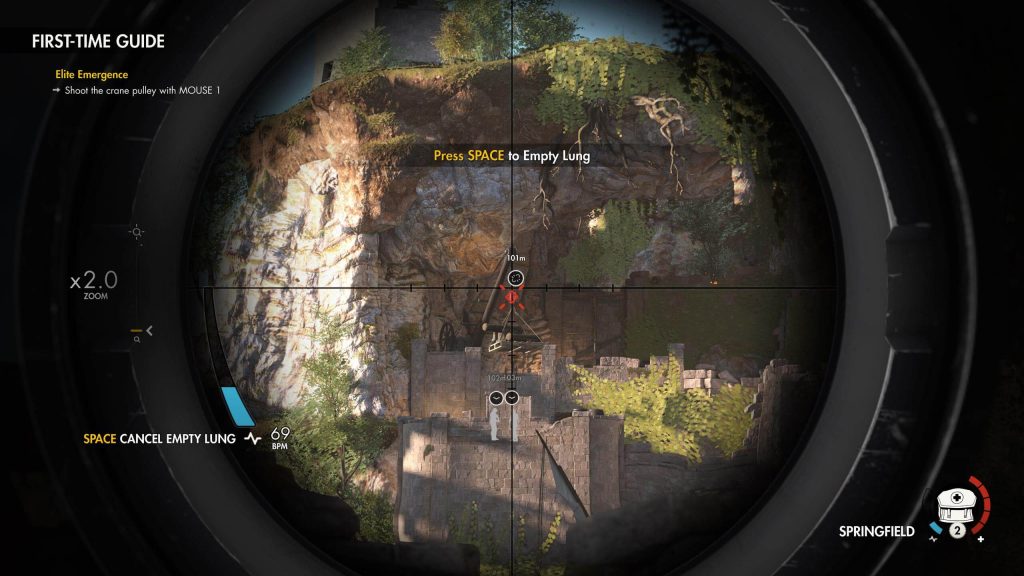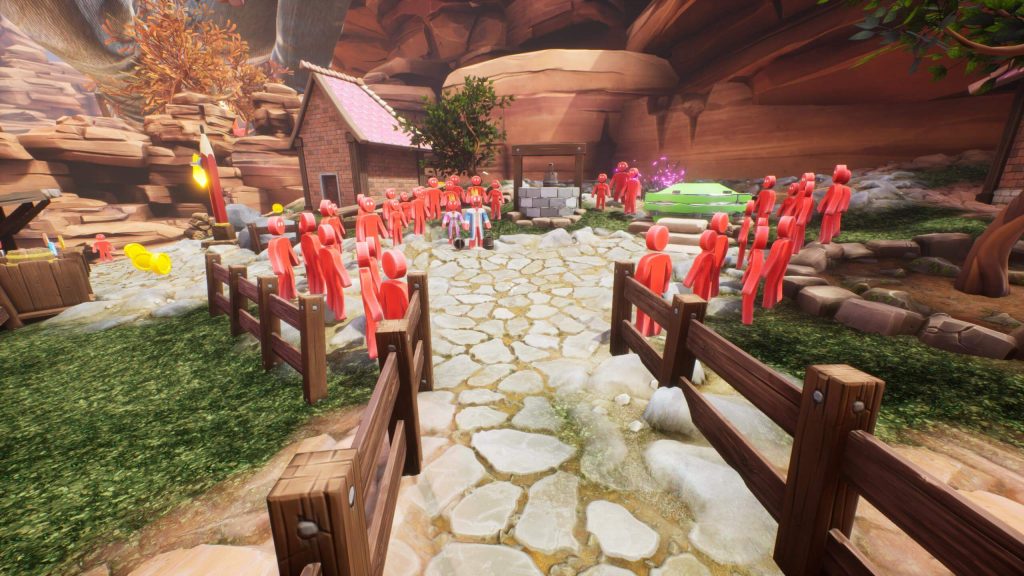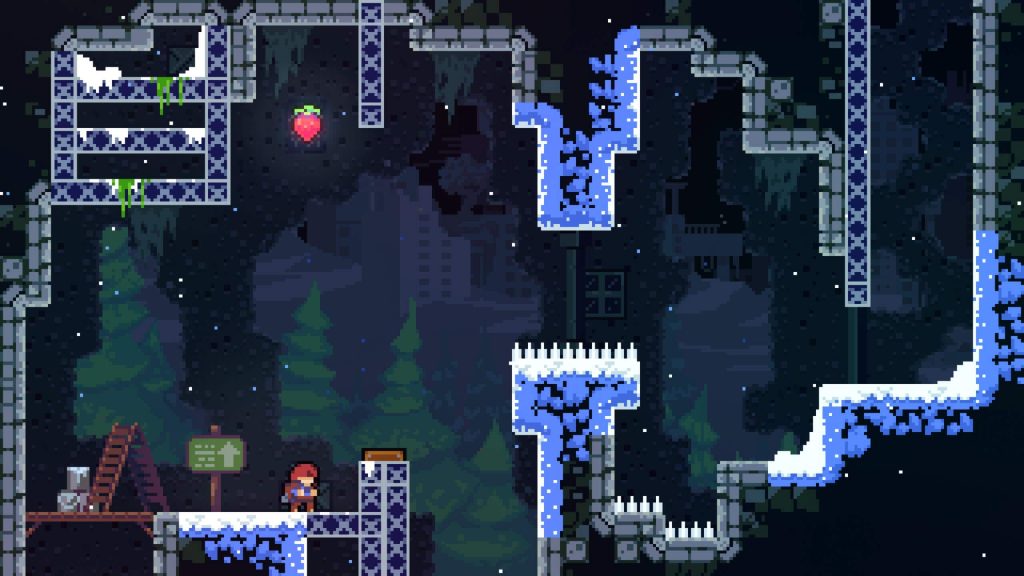Design Level Composition With Precision to Convey Atmosphere
On this page
Composition refers to the arrangement of visual elements within a scene to achieve a specific aesthetic or emotional effect. The composition of a scene—essentially what players observe on the screen at any given moment—can change in several ways:
When the player’s camera changes position.
When the field of view of the player’s camera changes, such as during zooming in or out.
When visual elements are added to, displaced on, or removed from the screen.
For this reason, the correct configuration of the player’s camera is essential. Employing composition as a tool to establish the appropriate atmosphere can be challenging, as it is not always possible to predict what the player will see at any given moment during gameplay. For instance, consider a scene you wish to create in both a 2D and a 3D environment. Composing this scene in 2D is typically easier because the player’s viewpoint is more constrained, making it simpler to control what is visible on screen compared to the broader freedom of movement in a 3D space.
Add the Right Number of Elements
Begin with simplicity. Include only those elements that contribute to the intended atmosphere. Eliminate distractions—especially those that detract from the emotional tone you wish to evoke.
When players learn to engage enemies during the first mission in Sniper Elite 4, their attention is naturally drawn to the crane they must shoot. This crane, along with two enemy soldiers, constitutes the positive space in the scene, whereas the surrounding mountain, trees, and ruins form the negative space.
Credit: Rebellion Developments. Screenshot captured by the author.
The quantity of elements in a scene can significantly influence the emotional experience. If your goal is to evoke a sense of calm, solitude, or emptiness, include a single dominant element and keep the remaining space minimally populated. The background, which does not draw attention, becomes negative space. The dominant element—anything that captures the player’s focus—represents the positive space. The greater the amount of negative space, the more stillness and emptiness the scene conveys.
Conversely, if the intention is not to evoke emptiness, the scene can be made more dynamic by adding additional elements.
In Supraland, when players enter the game world, the presence of numerous characters helps convey a sense of activity and liveliness.
Credit: Supra Games. Screenshot captured by the author.
Include Elements That Help Evoke the Desired Emotion
As previously mentioned, including only a few elements in a scene may help communicate a sense of emptiness. However, a limited number of elements does not inherently lead to negative emotions. A single dominant element surrounded by negative space can still generate a broad range of emotional responses such as fear, sadness, anger, hope, or satisfaction. The emotional response depends on what that element represents. Players will respond accordingly when they recognize it.
Examples:
Fear: People are generally afraid of monsters. Therefore, the appearance of a large monster in a sparse scene with insignificant background elements can evoke fear.
Sadness: Observing a dead person or animal elicits sadness, so corpses on the ground produce a sense of grief.
Anger: When players are forced to follow a monstrous leader, his presence making a speech can provoke anger.
Hope: A vehicle seen in a desolate area can inspire hope by suggesting an opportunity for escape.
Satisfaction: Players may feel satisfied after achieving a difficult task, such as raising an allied flag in a territory that was previously hostile.
However, when many instances of the same element are introduced, the emotional tone of the scene may shift toward the opposite end of the spectrum, such as:
Examples:
Hopelessness: When a task appears overwhelmingly difficult—such as locating the correct vehicle in a packed parking lot—players may feel hopeless.
Chaos: A street overcrowded with people can evoke a sense of chaos and disorder.
Alternatively, a scene filled with repeated elements can also feel more vibrant and even positive.
Examples:
Confidence: A well-stocked environment filled with resources can make players feel secure and confident.
Hope: The arrival of numerous warriors to assist the player in battle fosters a strong sense of hope and support.
Give Each Element Some Weight
After selecting the elements for your scene, ensure that each holds the appropriate level of significance. Players are naturally drawn to elements that stand out, such as:
Unfamiliar, bizarre, or unusual items.
Backlit elements.
Elements that are clearly isolated from their surroundings.
Highly saturated or high-contrast visuals.
In Celeste, collecting strawberries is straightforward due to the striking contrast between the glowing red fruit and the dark blue background.
Credit: Extremely OK Games. Screenshot captured by the author.
Illuminated objects.
Large-scale elements.
Living creatures, including humans and animals.
Animated or moving elements.
In Rogue Legacy 2, certain animated elements are also interactive, attracting additional focus from players.
Credit: Cellar Door Games. Footage captured by the author.
Frame Your Scene Correctly
Use compositional techniques to achieve a more engaging and impactful view of the scene, such as those described here.



